Scientist Report On Vertical Gardening
The best and biggest vertical gardens in the world
All over the world vertical gardens are seeing creativity rise to new heights. Cleaning the air and combatting pollution these living, or green walls are changing our environment for the better. They can be used on indoor or outdoor walls, on fences or even free standing.
The vertical garden is made up of 3 parts – a metal frame, a PVC layer and a layer of felt. The plants can be installed on the felt layer as seeds, cuttings or grown plants. The entire weight of a vertical garden, including the living plants and frame, is lower than 30 kg per square meter. Thus, these gardens can be implemented on any wall, without any size or height limitation.
Santalaia – Bogotá, Columbia
The largest vertical gardens in the world is now in Bogotá, Columbia. The Santalaia residential building can be found in the Rosales barrio and features 3,117 m2 of plants. Literally a breath of fresh air in the densely populated capital. This living building was completed in December 2015 after 16 months of planning and construction.
- 8 months of planning and 8 months for installation
- 115,000 plants – carbon footprint compensation of 700 people
- 3,000 m2 vegetation = oxygen for 3,100 people every year
- 42 irrigation stations
- Plant coverage = Reducation of Heat Island effect
- Air Cleansing for the PMM emissions of 745 cars
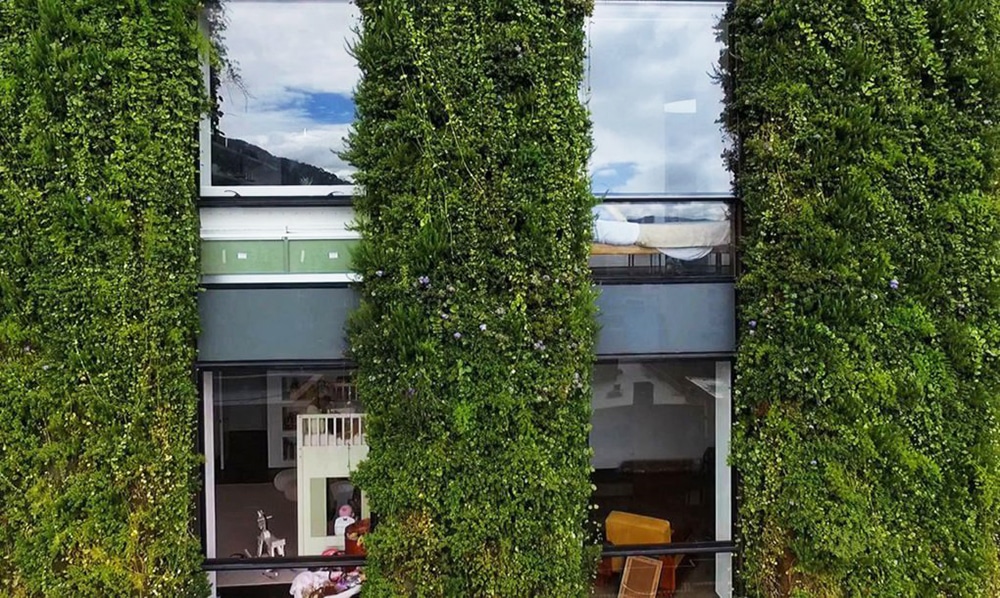
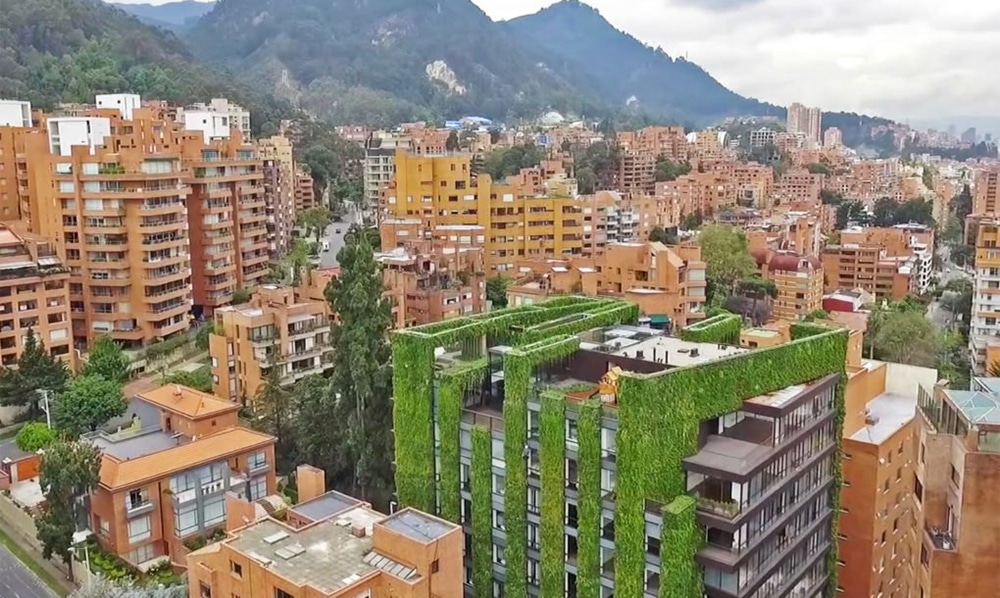
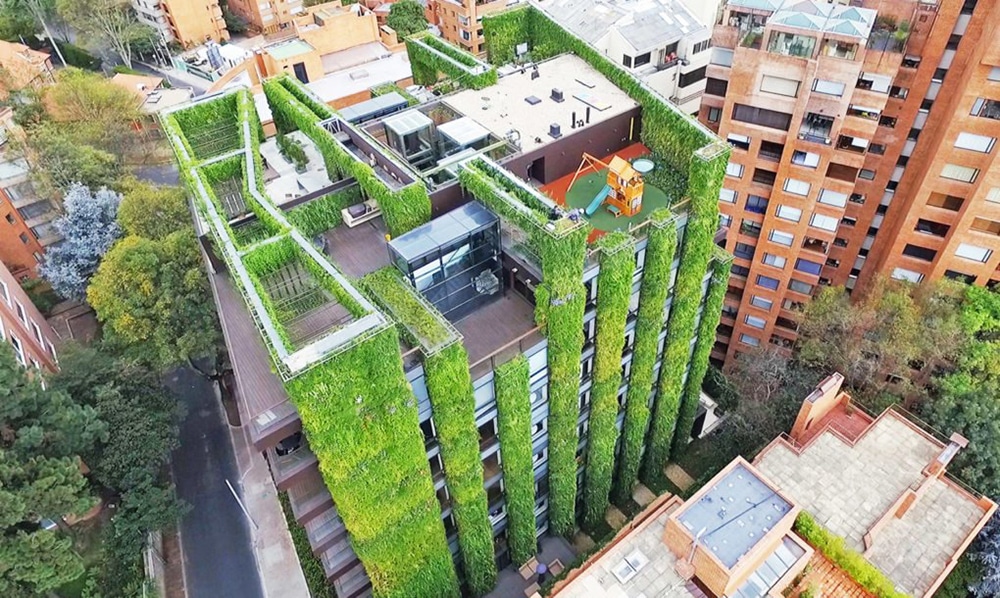
A vertical garden of this size will process 1,708 pounds of heavy metals, filter more than 2,000 tons of harmful gases and catch more than 881 pounds of dust every year.
The massive vertical garden is made up of plants such as rosemary, dwarf Hebe, asparagus fern, vincas and spathiphyllum flowering plants, among many others.
The project was built in collaboration between builder and designer Exacta Proyecto Total, Paisajismo Urbano (Vertical Garden Technology) and Groncol (Vertical garden and green roof designer and installer).
Even watering doesn't put a drain on resources and has been cleverly designed to use up waste water. "The Santalaia building is using water from the apartments' showers for irrigation. Among many technical details, we installed humidity and radiation sensors to optimize water consumption as well as a water treatment plant so as not to have any water waste," said Pablo Atuesta, general manager of Groncol.
Tree House, Singapore
The Tree House can be found in a quiet corner of Singapore's District 23. City Developments Limited (CDL) won a tender for the site in 2009 and the project was completed in 2013, setting a new Guinness World Record at the time for the world's largest vertical garden. The wall measures a staggering 2,288 m2 and saves more than half a million dollars in energy and water costs every year. The 24-storey apartment building features state-of-the-art sustainable technologies like heat-reducing windows, motion sensors for lighting and a sloped design to maximise rainfall catchment.
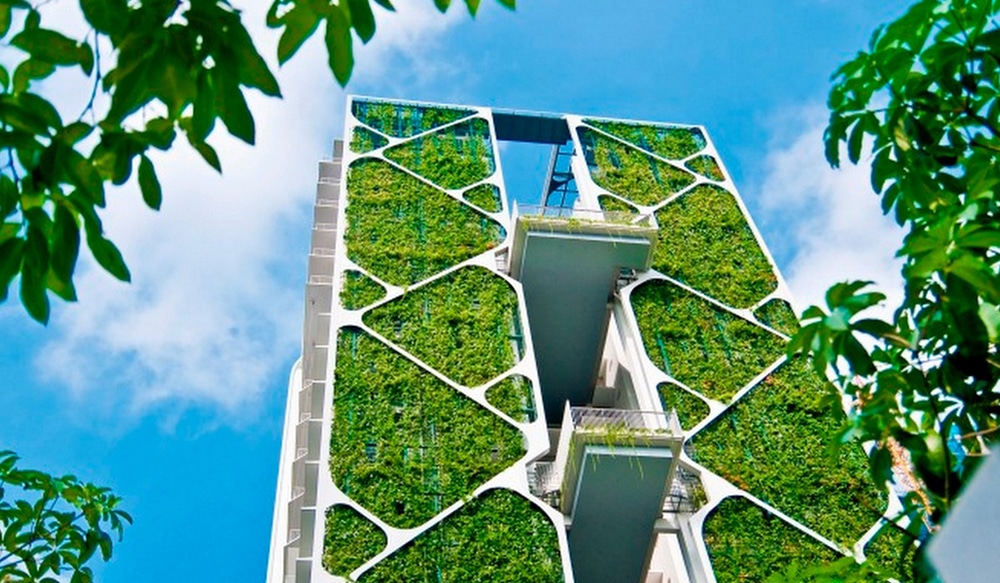
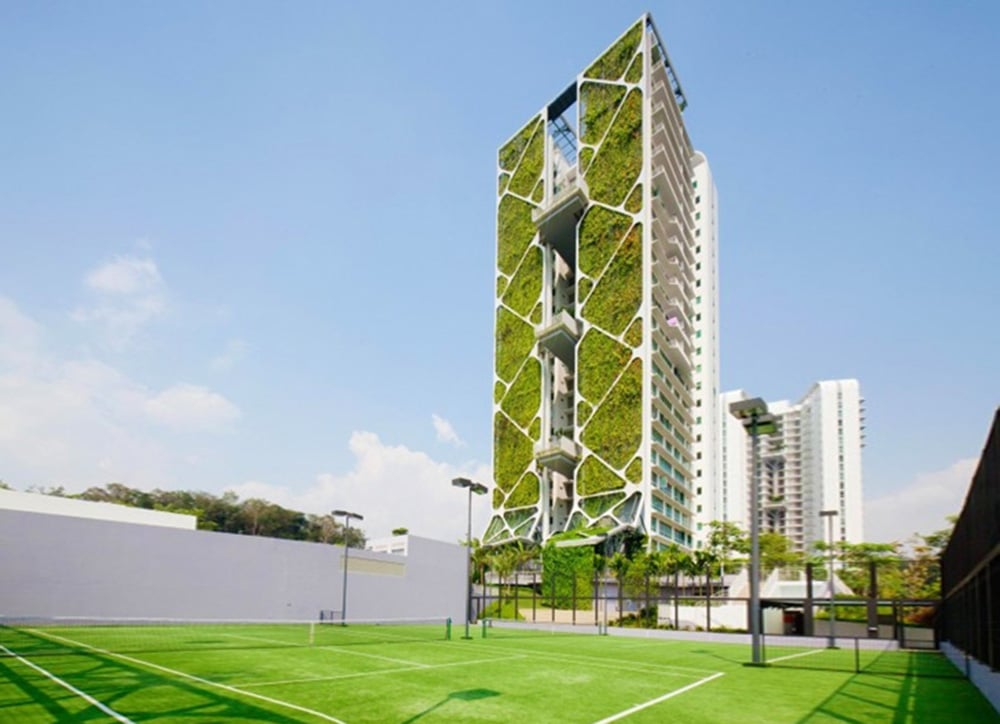
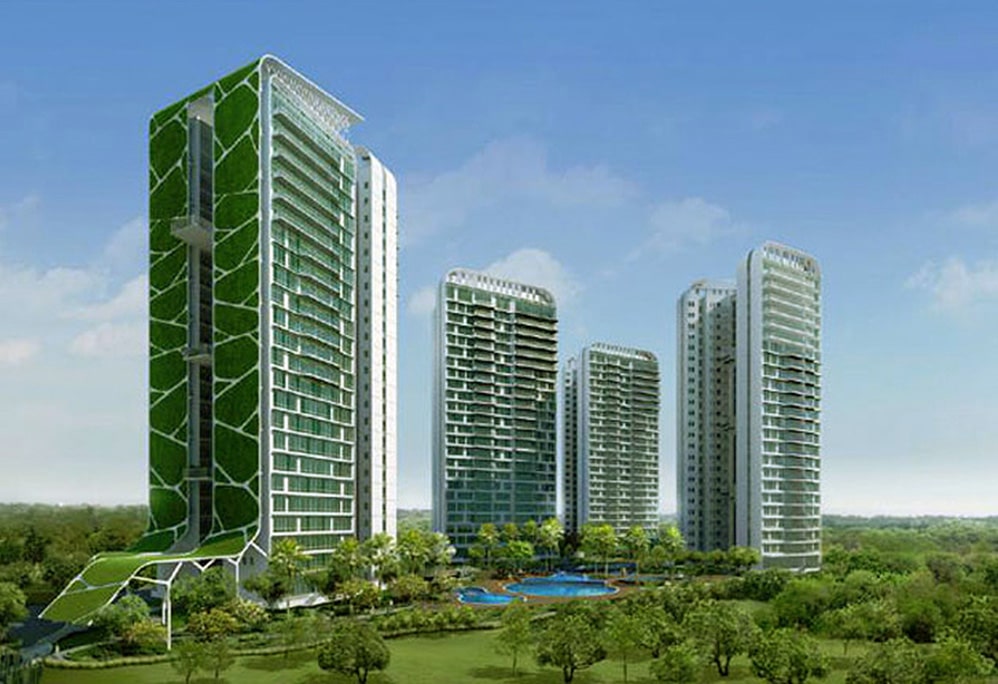
Shin-Yamaguchi Station, Japan
Designed and built by Patrick Blanc – the inventor of the vertical garden – this walkway connects the south and the north areas of the Shin-Yamaguchi Station. 100 metres long and with 400 m2 of surface area, it's the biggest vertical garden in Japan. 17,000 plants representing 135 different species are living in this amazing wall – propagated by local nurseries for two years before installation. The plants are watered from the top several times per day with rain water collected from the roof of the building, and well water.
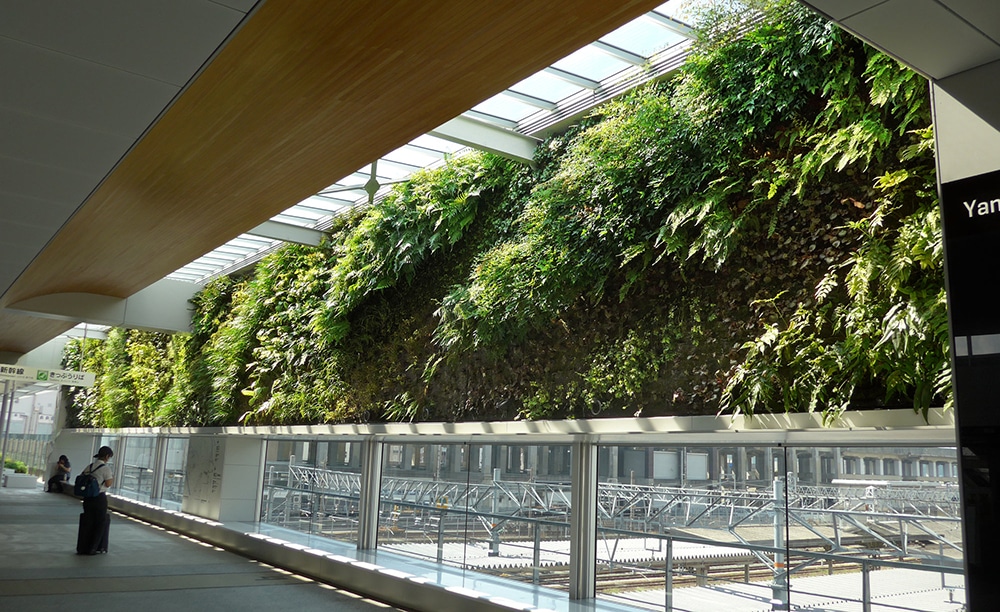
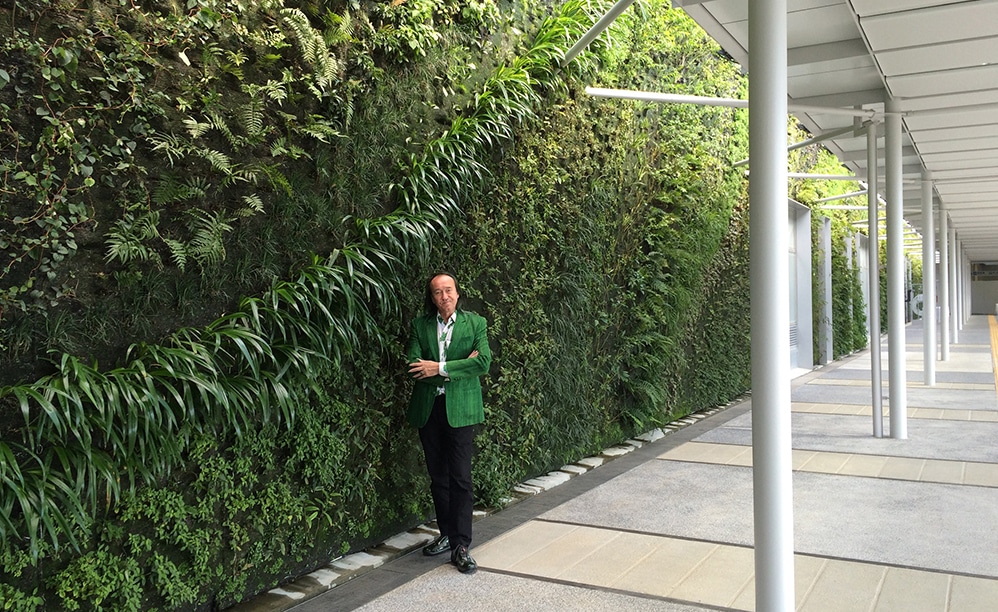
Em Quartier, Bangkok
The Rain Forest Chandelier at EmQuartier in Bangkok is the longest free hanging structure in the world, 103 metres long, totally covered by plants. Designed and conceived by Patrick Blanc.
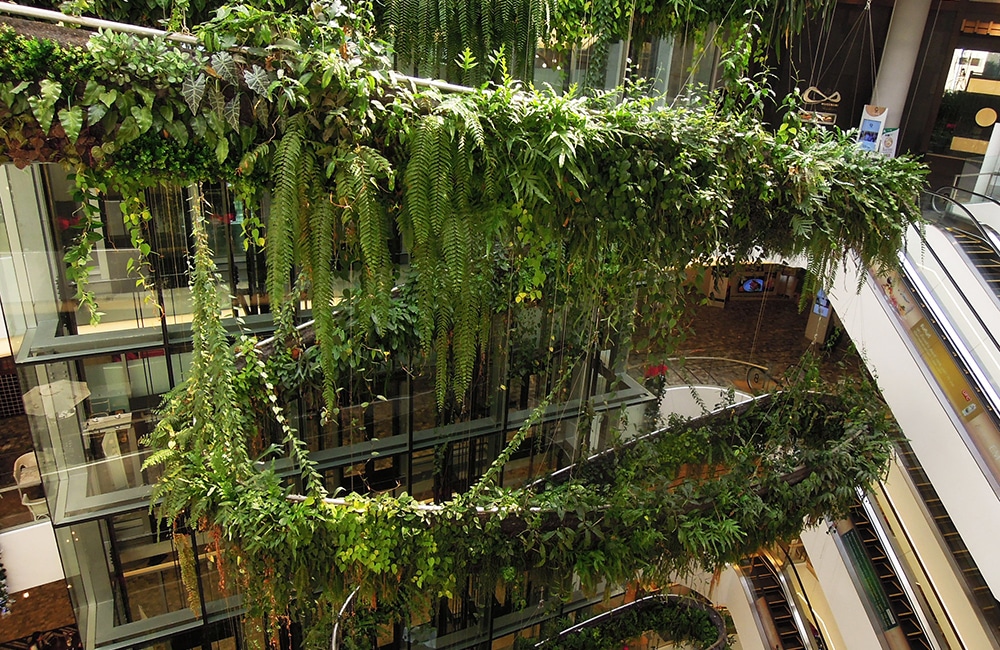
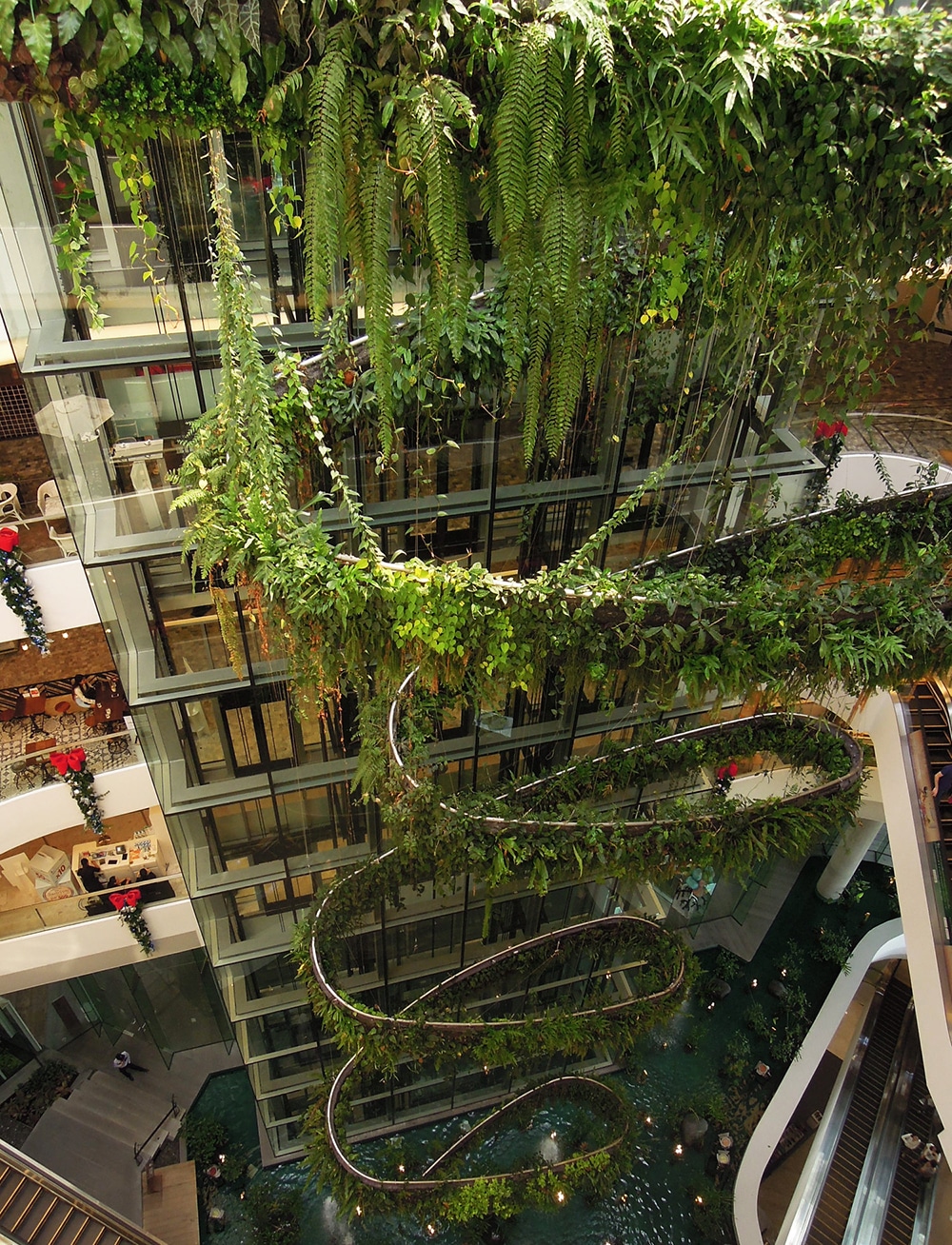
CaixaForum Madrid, Spain
Madrid has a very epic vertical garden, designed and created by Patrick Blanc. Finished in 2008 the wall contrasts beautifully with the deep orange of the adjacent building and is a fascinating combination of architecture, art and botany. Visitors enjoy sitting beneath the wall to cool off from the intense Madrid heat – temperatures are 2-3 degrees cooler in the vicinity of the wall. Over 1,500 plants representing some 250 species are living in the wall.
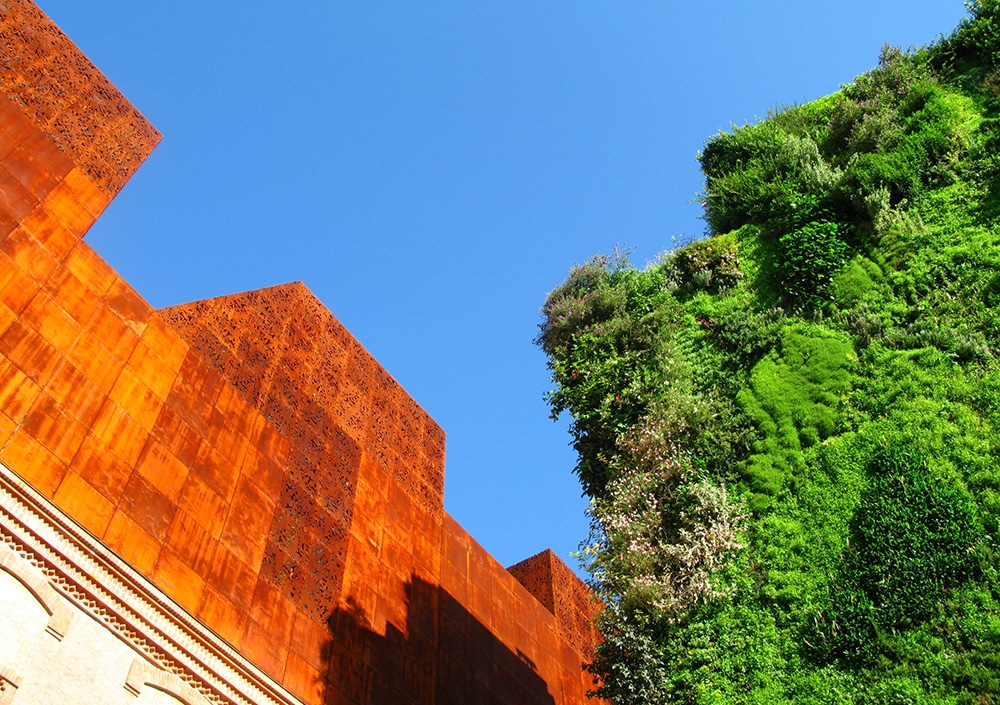
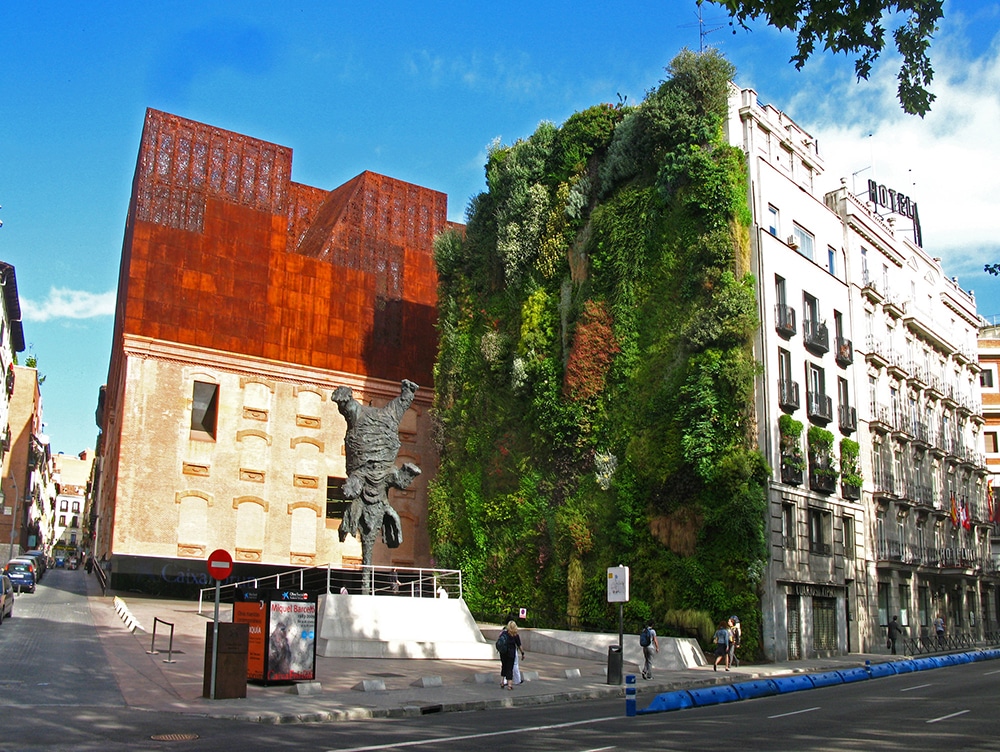
Quai Branly Museum – Paris
The musée du quai Branly-Jacques Chirac in Paris is a museum featuring the indigenous art and cultures of Africa, Asia, Oceania, and the Americas, located in the 7th arrondissement of Paris, on the left bank of the Seine, close to the Eiffel Tower. The living wall of greenery, created by Patrick Blanc, covers 800 m2 of the facades of the museum, and 150 m2 of the interior walls. It includes 15,000 plants of 150 different varieties, coming from Japan, China, the Americas and Central Europe.
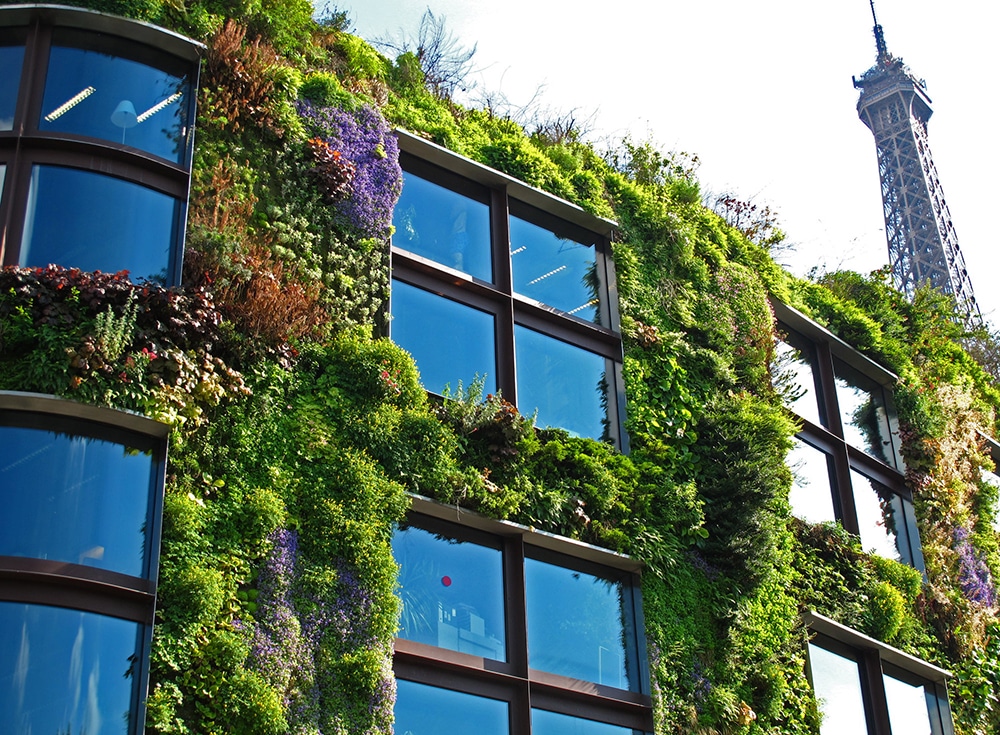
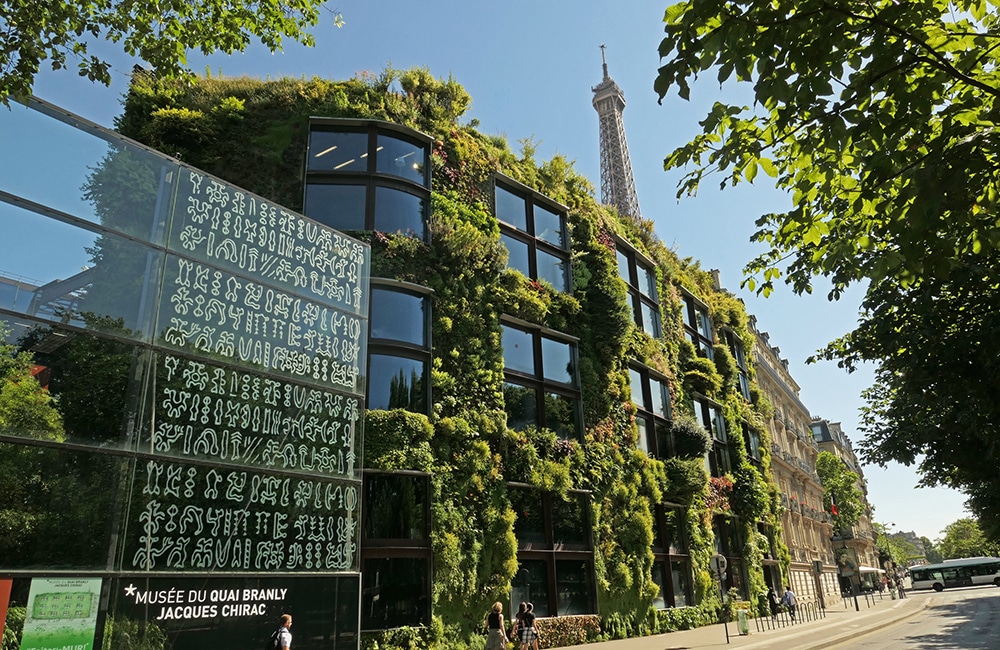
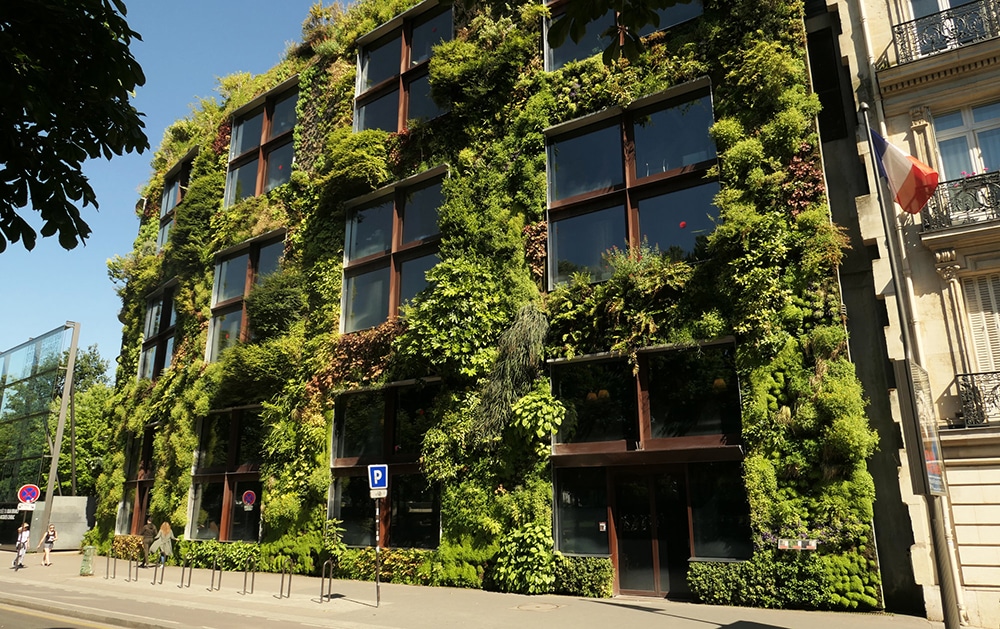
Vertical Gardens for China this year
As a way to combat smog in cities you don't get much better than vertical gardens. Italian firm Stefano Boeri Architetti is planning to build the first one in Nanjing, China. The two towers, to be completed this year, will be known as the Nanjing Green Towers and will be covered in 600 tall trees, 500 medium-sized trees and 2,500 cascading plants and shrubs, covering an area of 6,000 m2. This vertical forest will help to regenerate local biodiversity, and provide 25 tons of CO2 absorption each year and about 60 kg of oxygen per day.
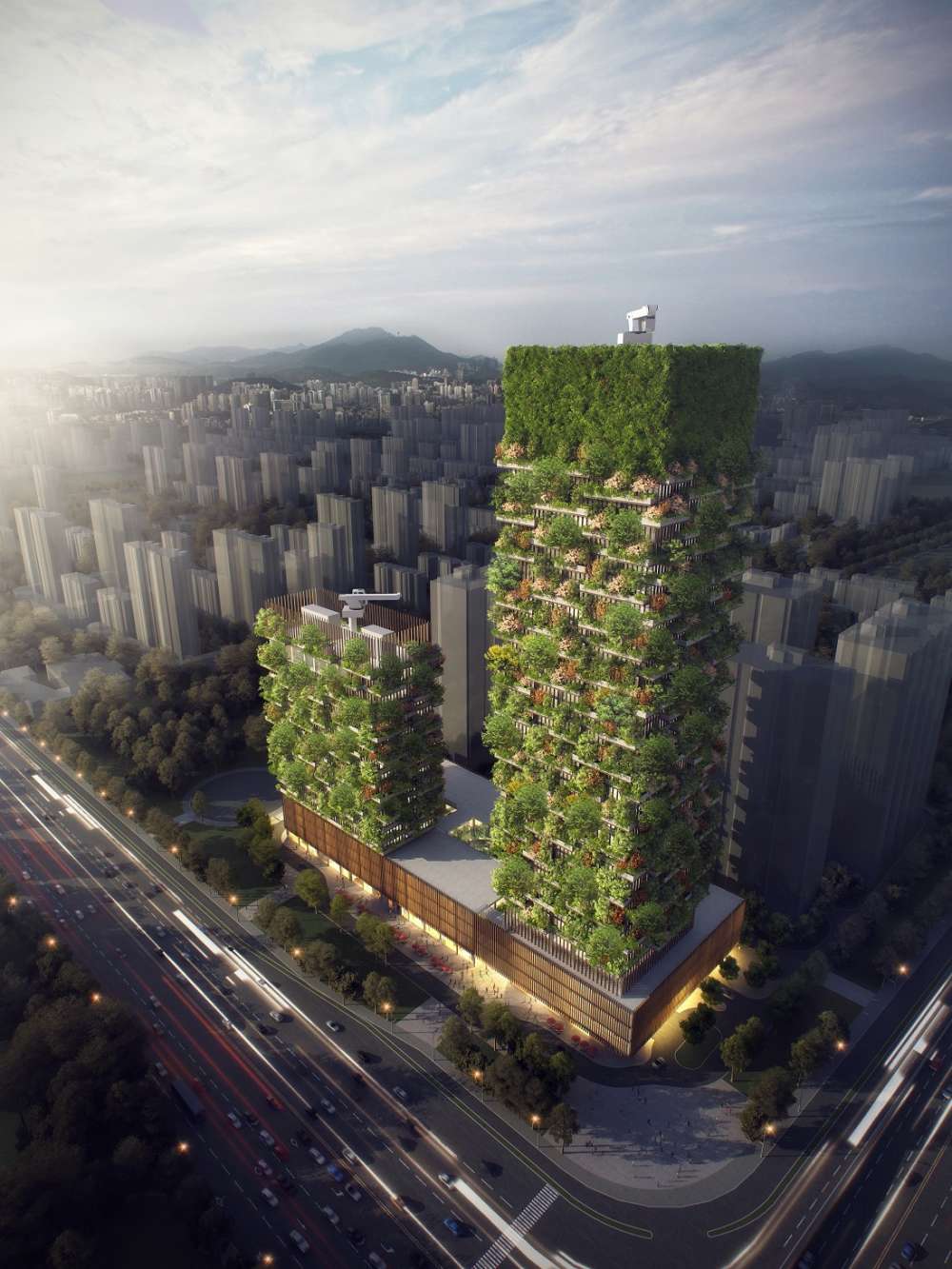
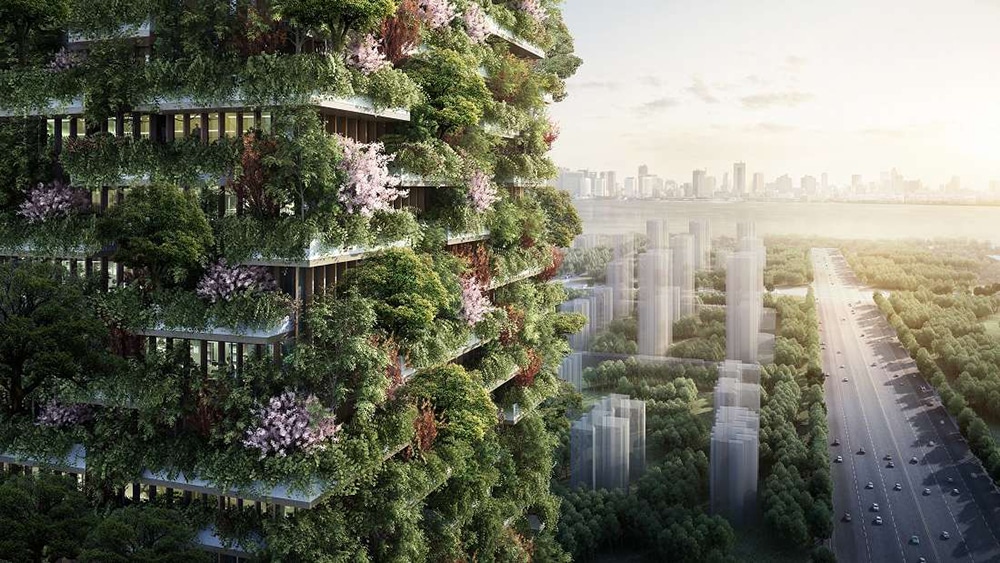
Vertical Gardens are not just fantastic for the outside of buildings but work well for interiors as well. UDesign have created a number of projects that incorporate green walls – a few can be seen below. To see more visit our Interior Design Gallery.
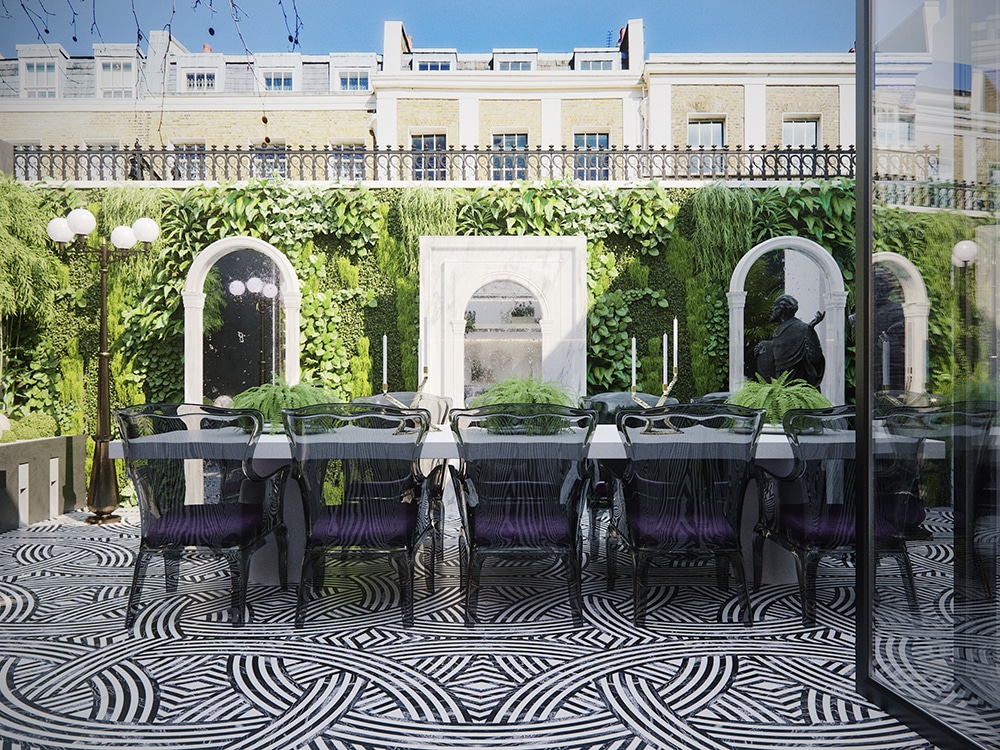
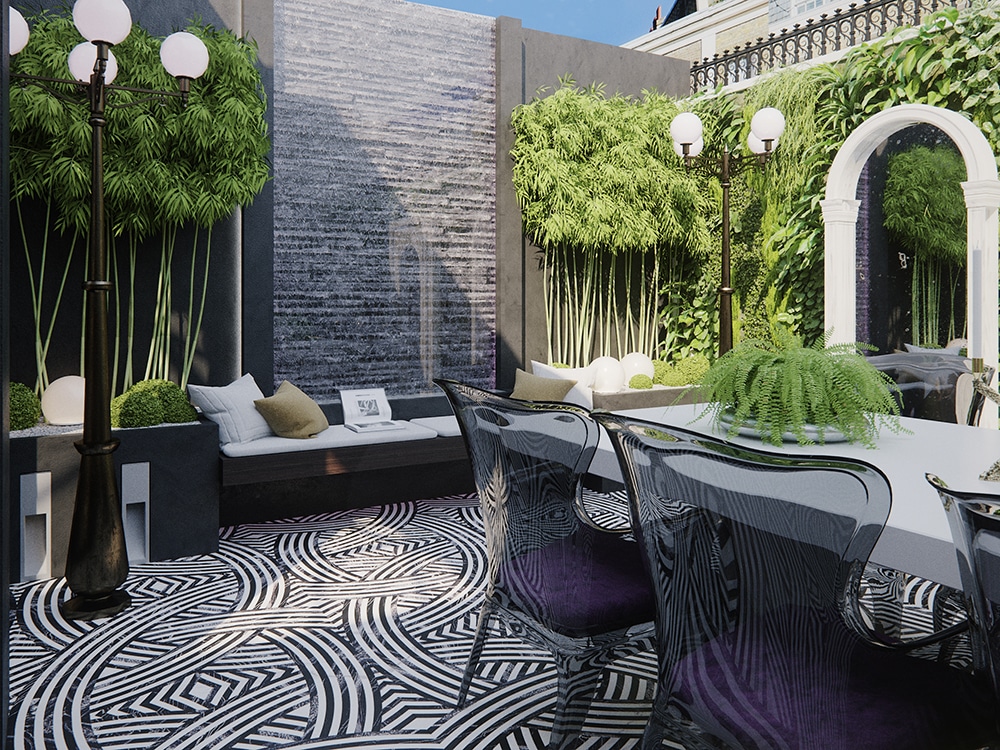
Vertical gardens complete the terrace of this listed building in London's Eaton Square
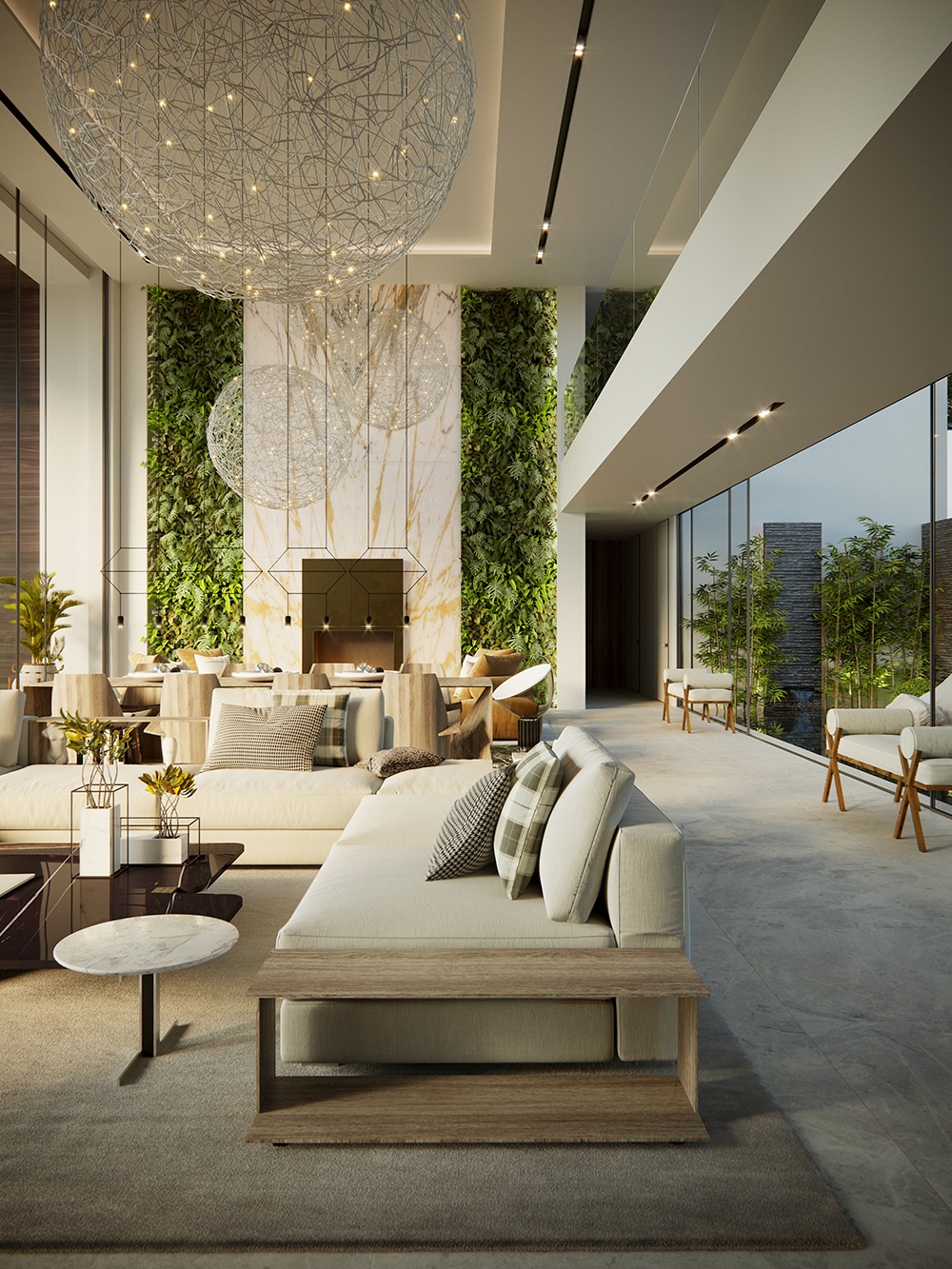
Vertical gardens graceful flank a 6-metre high piece of illuminated onyx
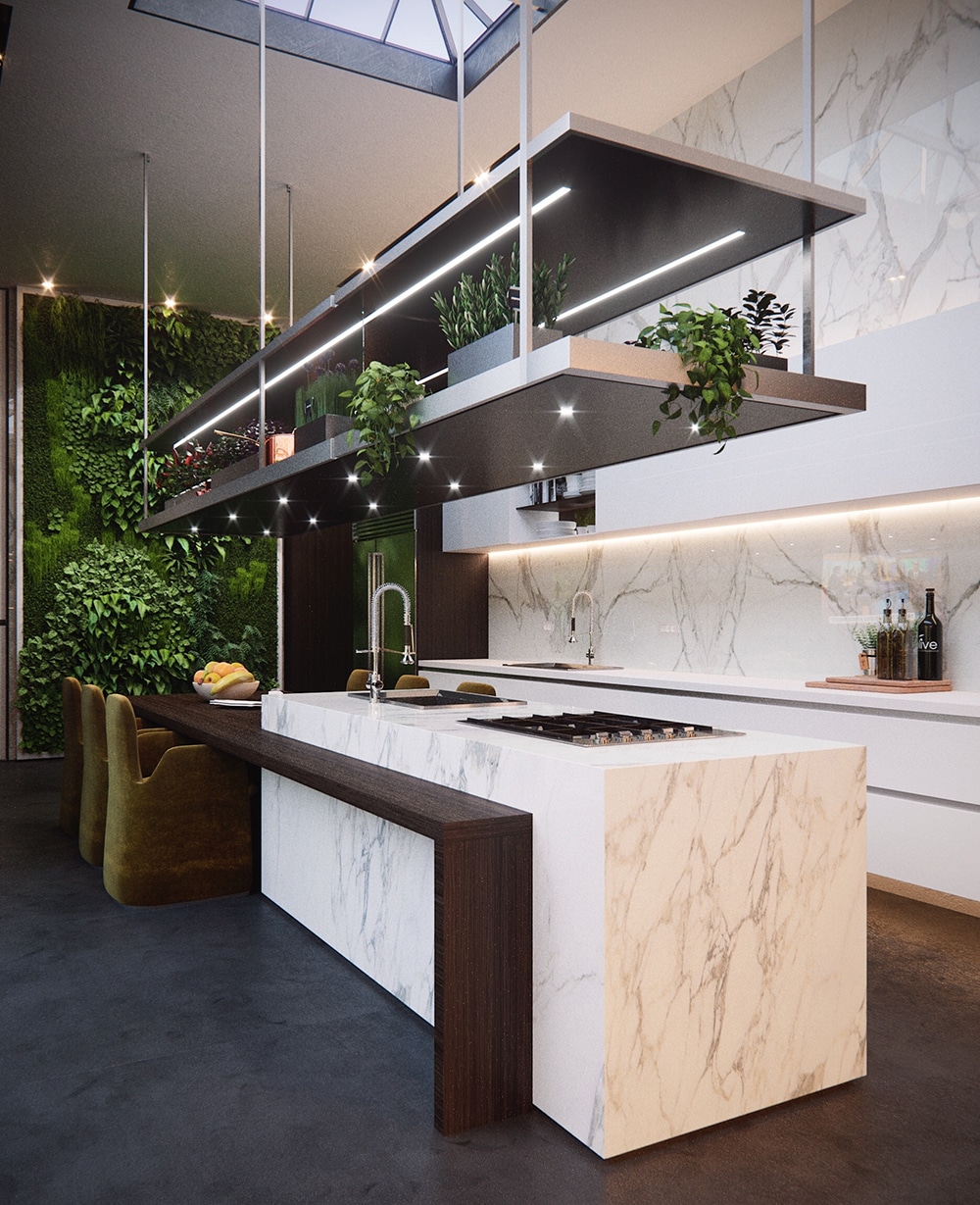
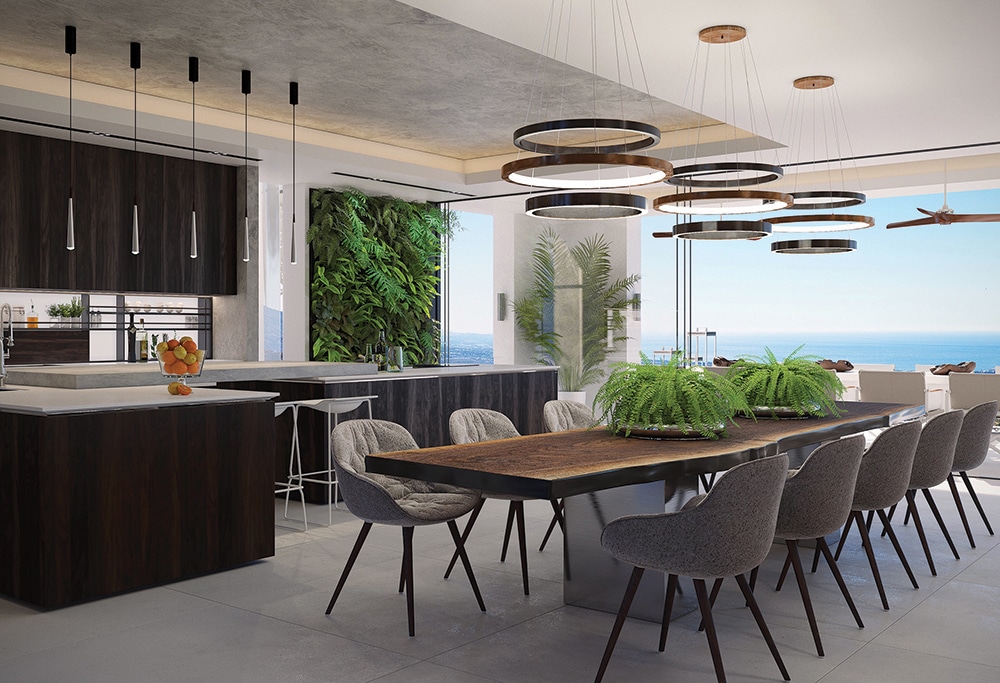
These vertical gardens bring freshness to any kitchen or dining room
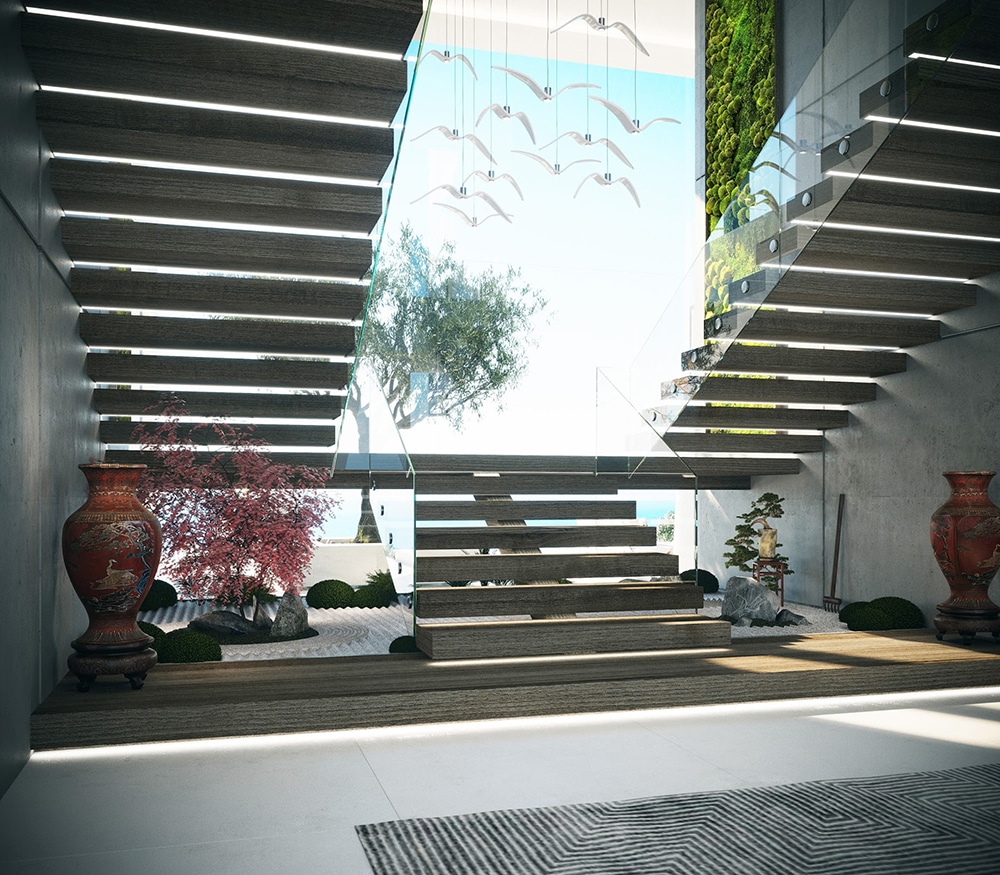
Stairs can be just stairs or a work of art
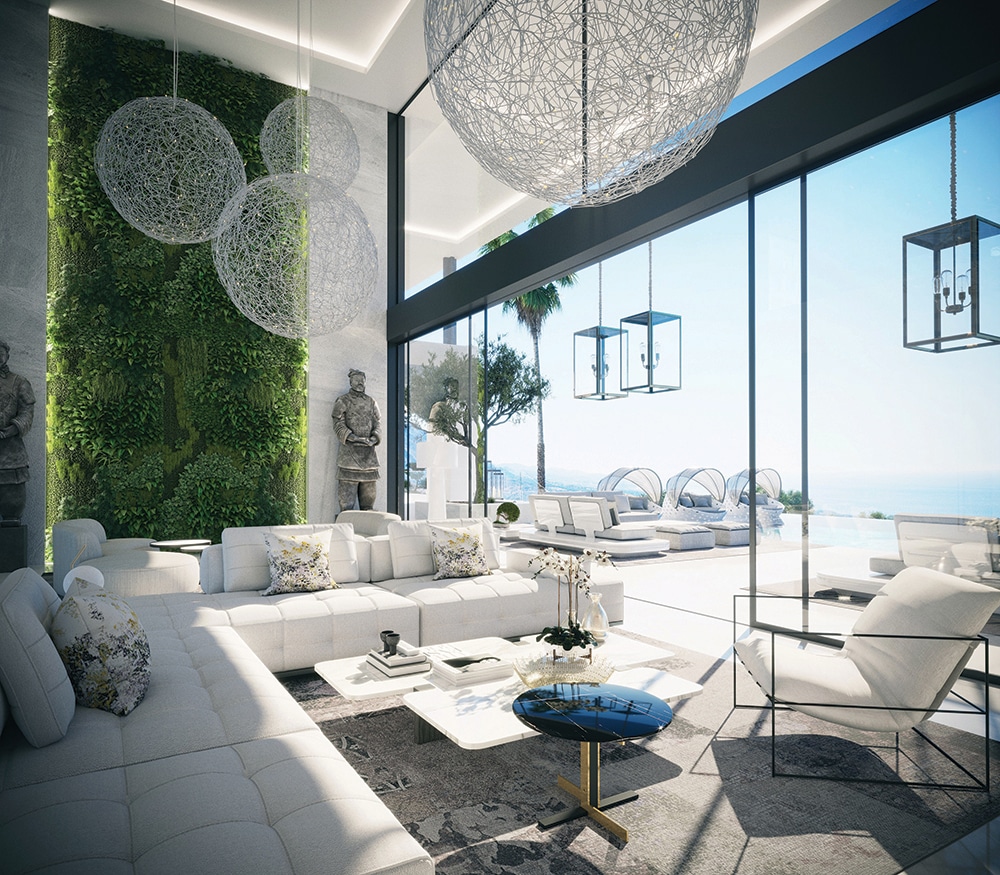
This 6-metre high vertical garden brings nature inside as a huge organic work of art

A lush vertical garden in your bathroom
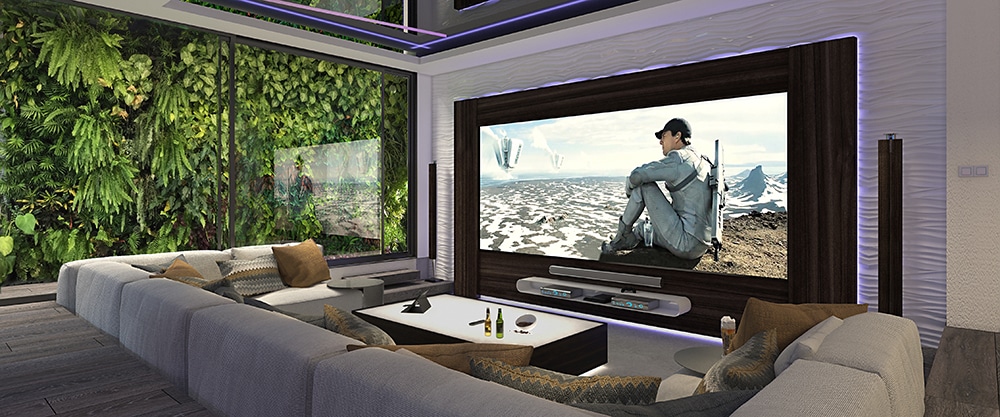
The garden comes inside in this beautiful entertainment room
Patrick Blanc
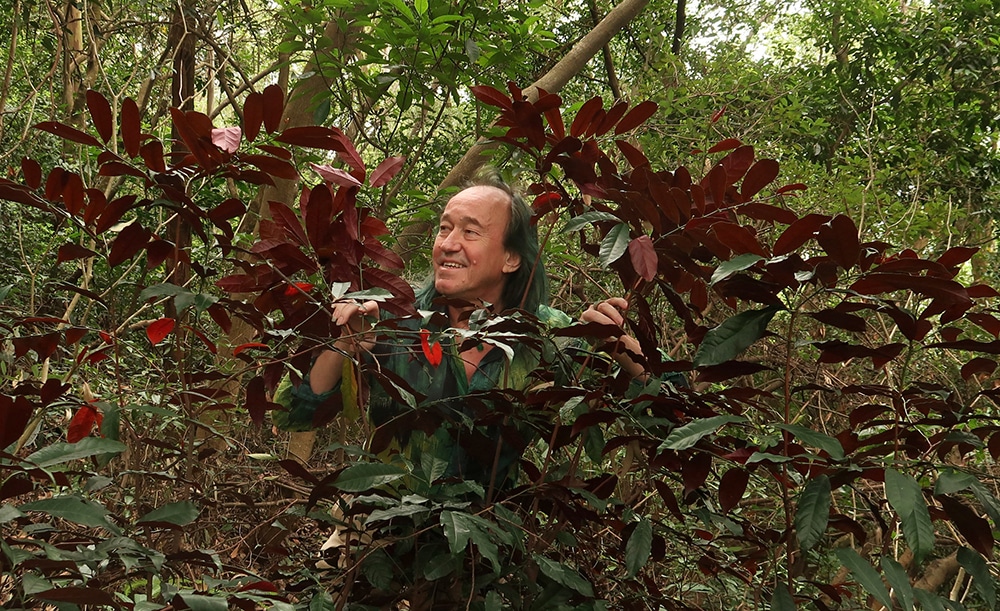
Patrick Blanc is a botanist and creator of the vertical garden. A scientist, working for the CNRS (Centre National de la Recherche Scientifique) since 1982, Blanc's vertical gardens have taken him around the world, creating incredible works of living art not just for cities and public buildings but for many private residences. Stanley Hart White, a Professor of Landscape Architecture at the University of Illinois first patented a "vegetation-bearing architectonic structure and system" in 1938, though his invention did not progress beyond prototypes in his backyard in Urbana, Illinois.
Be sure to visit Patrick Blanc's website to see more of his incredible work.
Scientist Report On Vertical Gardening
Source: https://www.udesign.es/best-biggest-vertical-gardens-world/
Posted by: herrerabeinglis.blogspot.com

0 Response to "Scientist Report On Vertical Gardening"
Post a Comment